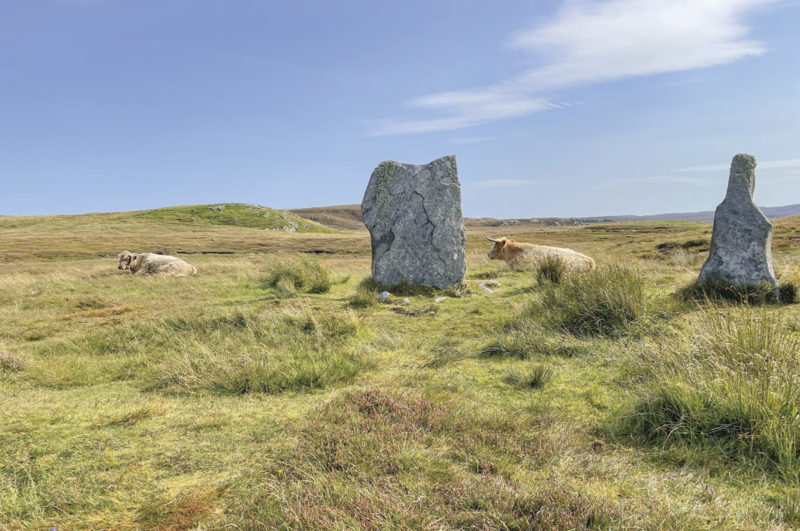Highland cows – or coos, if you are a Scot – are a common subject of conversation in our house. Our neighbors bought one last year, and the kids adore her. She’s got that fluffy hair and that lazy, laid-back look. The 10-year-old, who has recently figured out Craigslist, is constantly searching for a Highlander to buy with the money from her 4-H steer. Long on love but short on patience, my husband has put his foot down on such a frivolous purchase. I don’t think adding one to the herd would do any harm – not everything has to be practical. “But we have our reputations to think of, Erica.”
The Highland cow conversations ramped up when we told the kids about our upcoming trip to Scotland. My great-grandfather emigrated from Scotland, so growing up, my family made much of our Scottish roots. I’ve always wanted to visit, and I planned a trip this year. As kids do, mine immediately started telling us what trinkets we should bring home to them. High on the list was a Highland cow – preferably live, but they’d settle for a stuffie (a stuffed animal) if transportation was an issue.
We went to Scotland with the thought of seeing a lot of said cows. We spent two days in the capital city of Edinburgh, and adorable Highlander stuffed animals tempted American tourists in the gift shops. From the city, we headed north to the actual highlands. Like any farm folk, we spent a lot of time admiring and comparing the fields, equipment and livestock of the native farmers. At least, I did. Craig was busy trying to drive a manual transmission car on the left side of the road when the roads were no wider than pony tracks (he was just a little stressed). Yet, with all that farming from the road, I didn’t see one Highland cow. I saw a lot of Angus, some Herefords and a smattering of shorthorns, but no Highlanders.
On the second day, in the oddest of all places, we spotted two Highland bulls as we were kayaking in Loch Lomond. These handsome beasts were hanging beachside on an island in the middle of the loch. We paddled up to them and approached them like proper tourists – not unlike the Yellowstone tourists we hear about in the news. Yet, they put up with our photos and didn’t do much but swish their tails. I texted the pictures to our kids.
That was the last we saw of Highland coos for several days until we spotted some more on the Isle of Lewis hanging out among some standing stones – the ancient kind. I’m not kidding. This is where I got a sneaking suspicion they were placed there strategically – like a little tourist trap by the locals. The next and final place we saw Highland cows was at the Highland Folk Museum, and they were named Lucky and Fluff. These two girls were definitely for the tourists – no suspicions there. In the entire 10-day trip, we didn’t see any Highland cows in any farming or ranch production setting. I was bummed.
The next morning, at our bed-and-breakfast, we asked our host about the Highland coos and why there weren’t more around. Now, this guy admitted that he wasn’t a cattleman, but his son was a stock buyer, and he said that his son said, “Those coos are not verra good breeders.”
That settled it for Craig. If actual human highlanders don’t use Highlanders, there is no reason he should either. I had to admit that they seemed as much of a novelty in their homeland as they are in the U.S. Well, at least the Angus are thriving in their homelands as much as they are abroad. They just aren’t half as cute.








